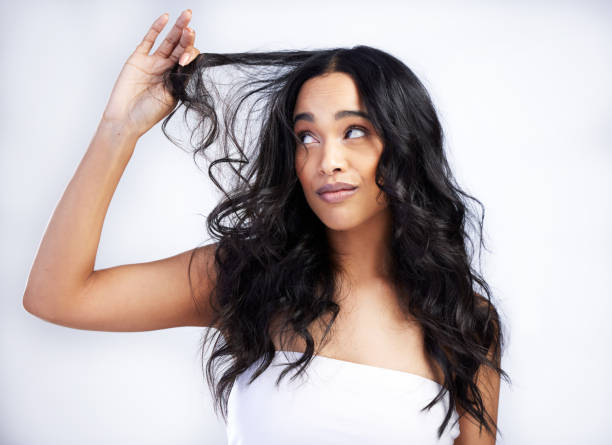Hair Tips: In this video we will share important information related to your hair which every woman and man must know. We will discuss proper hair care, nutrition, and what measures should be taken to solve common problems.
Essential Hair Care Tips for Men and Women: A Comprehensive Guide
Hair is often considered a vital aspect of personal appearance and self-expression. Whether you’re aiming for a glossy mane or simply seeking to maintain healthy hair, understanding the fundamentals of hair care is essential. In this detailed guide, we will cover crucial information about proper hair care, nutrition, and effective solutions for common hair problems. By incorporating these practices into your routine, you can enhance your hair’s health and appearance.
1. Understanding Hair Types and Needs
Hair Types
Hair care begins with understanding your hair type, which can be categorized as straight, wavy, curly, or coily. Each type has unique needs and characteristics:
- Straight Hair: Typically oily at the roots and prone to grease. It can be sleek but may lack volume.
- Wavy Hair: Often prone to frizz and may require products that enhance or control waves.
- Curly Hair: Needs moisture and definition. Curls can be delicate and prone to breakage.
- Coily Hair: Highly textured and can be prone to dryness and shrinkage. It requires deep conditioning and moisture.
Scalp Types
Equally important is understanding your scalp type:
- Oily Scalp: Requires frequent washing and oil-absorbing products.
- Dry Scalp: Needs hydrating shampoos and conditioners.
- Sensitive Scalp: Should use gentle, hypoallergenic products.
2. Proper Hair Care Routine
Cleansing
- Frequency: The frequency of hair washing depends on your scalp type and lifestyle. For oily scalps, daily or every other day may be necessary, while dry scalps might benefit from washing less frequently.
- Shampoo Choice: Choose a shampoo suited to your hair type and scalp condition. Avoid shampoos with harsh sulfates that can strip natural oils.
Conditioning
- Regular Use: Use conditioner every time you shampoo to maintain moisture and manageability.
- Deep Conditioning: Incorporate deep conditioning treatments or hair masks once a week to nourish and repair your hair.
Drying and Styling
- Gentle Drying: Pat your hair dry with a towel rather than rubbing it. Avoid using high heat when blow-drying; opt for a cooler setting.
- Heat Protection: Always use a heat protectant spray before using styling tools like curling irons or straighteners.
- Minimal Heat: Reduce the frequency of heat styling to prevent damage.
Combing and Brushing
- Detangling: Use a wide-tooth comb to detangle wet hair gently. Avoid pulling or tugging to prevent breakage.
- Brushing: Use a brush appropriate for your hair type. For example, a boar bristle brush can distribute natural oils evenly in straight hair.
3. Nutrition for Healthy Hair
Essential Nutrients
- Protein: Hair is primarily made of protein, so ensure adequate protein intake from sources like lean meats, fish, eggs, and legumes.
- Omega-3 Fatty Acids: These essential fats support scalp health and can be found in fish like salmon, flaxseeds, and walnuts.
- Vitamins and Minerals: Key vitamins include Vitamin A (for sebum production), Vitamin C (for collagen), and B vitamins (for hair growth). Minerals such as iron, zinc, and biotin are also crucial for healthy hair.
Hydration
- Water Intake: Staying hydrated is vital for maintaining healthy hair. Aim to drink plenty of water throughout the day.
- Moisture: Incorporate hydrating foods like cucumbers, oranges, and melons into your diet.
4. Addressing Common Hair Problems
Hair Loss
- Causes: Hair loss can result from various factors, including genetics, stress, hormonal changes, and nutritional deficiencies.
- Solutions: Address hair loss with appropriate treatments such as minoxidil or finasteride, and consult a dermatologist for personalized advice. Consider incorporating more iron-rich foods and reducing stress through relaxation techniques.
Dandruff
- Causes: Dandruff can be caused by an oily scalp, fungal infections, or dry skin.
- Solutions: Use anti-dandruff shampoos containing ingredients like zinc pyrithione or ketoconazole. Ensure proper scalp hygiene and consider consulting a dermatologist for persistent issues.
Frizz
- Causes: Frizz can result from humidity, dryness, or damage.
- Solutions: Use anti-frizz products and deep conditioning treatments to manage frizz. Incorporate a leave-in conditioner and avoid excessive heat styling.
Split Ends
- Causes: Split ends occur due to damage from heat, chemical treatments, or lack of moisture.
- Solutions: Regular trims can prevent and manage split ends. Use nourishing hair oils and avoid excessive brushing.
5. Hair Care Tips for Specific Needs
Color-Treated Hair
- Shampoo and Conditioner: Use color-safe products to maintain the vibrancy and integrity of your color-treated hair.
- Avoid Excessive Washing: Wash color-treated hair less frequently to prevent color from fading.
Curly and Coily Hair
- Moisturization: Emphasize hydration with leave-in conditioners and oils. Consider using curl creams or gels to define curls and reduce frizz.
- Protective Styles: Use protective hairstyles to prevent breakage and maintain moisture.
Fine and Limp Hair
- Volume Boosting: Use lightweight volumizing products and avoid heavy conditioners that can weigh down fine hair.
- Root Lifting: Incorporate root-lifting sprays or powders to add volume and fullness.
Proper hair care involves a combination of understanding your hair and scalp types, following a suitable hair care routine, and addressing common issues with effective solutions. By paying attention to nutrition and hydration, you can support your hair’s health from the inside out. Whether dealing with hair loss, dandruff, frizz, or other concerns, implementing these practices and tips will help you achieve and maintain healthy, beautiful hair. Remember, consistency is key, and with the right care, your hair can look and feel its best.

